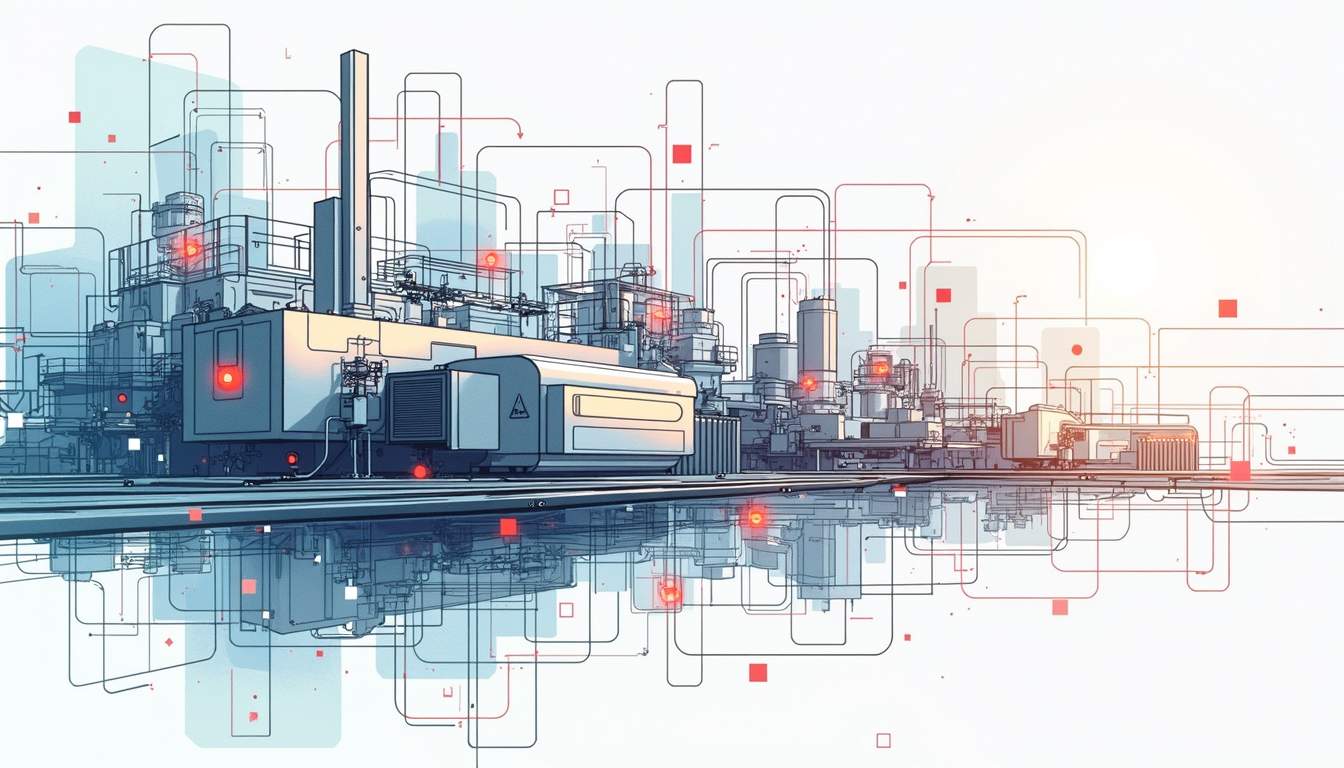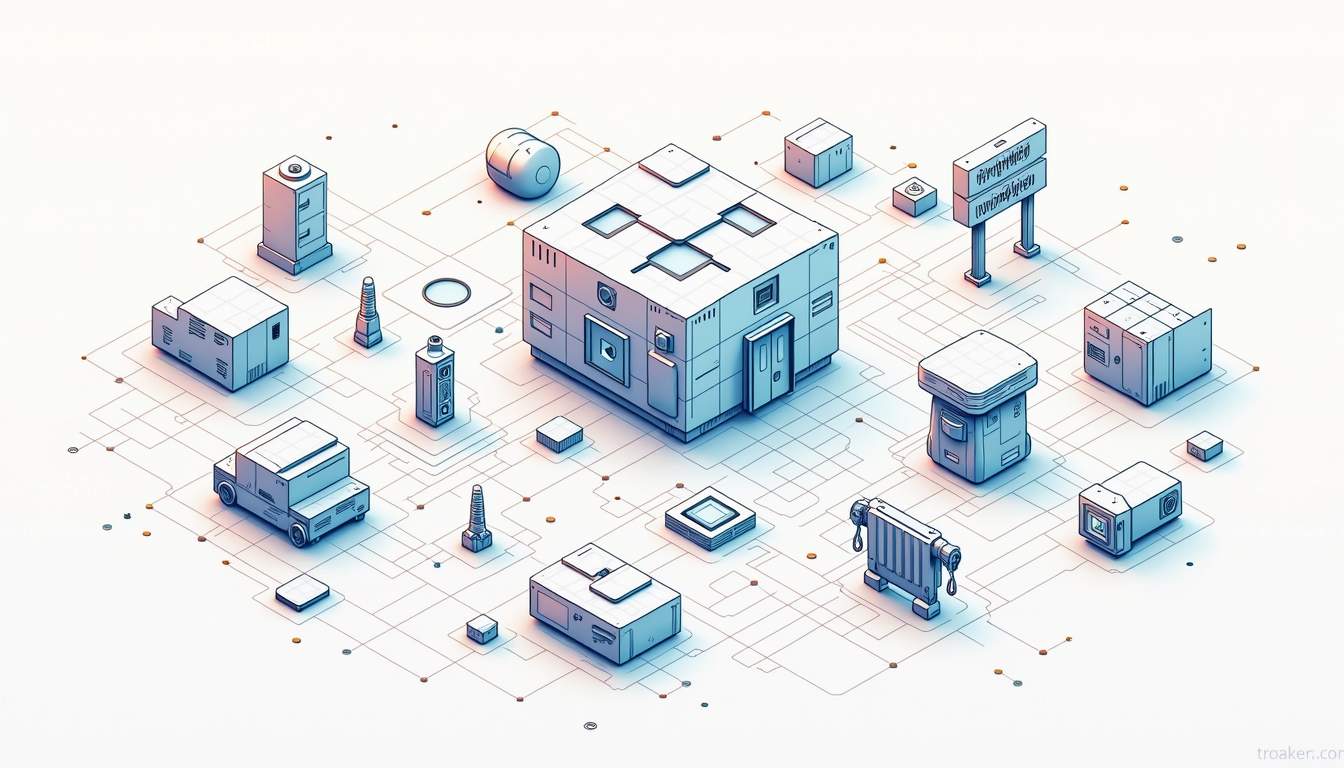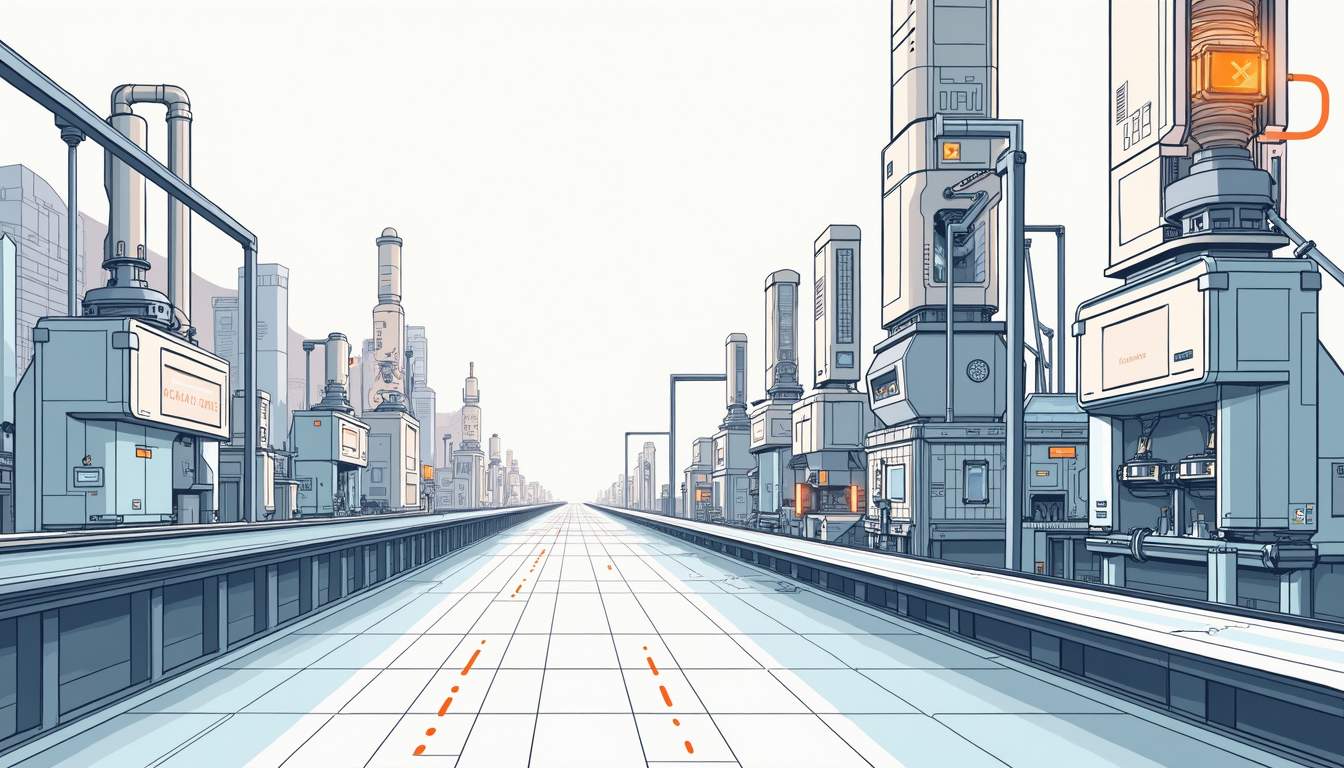Introduction to Cyber-Physical Systems
Cyber-Physical Systems (CPS) represent a convergence of the physical and digital worlds, where computational elements are integrated with physical processes. These systems utilize embedded computing, networking, and control technologies to monitor and manage physical processes in real-time. The design and implementation of CPS are crucial in various domains, including manufacturing, transportation, healthcare, and smart grids.

The essence of CPS lies in their ability to interact with the physical environment through sensors and actuators, enabling them to collect data, process it, and respond accordingly. This interaction creates a feedback loop that enhances the efficiency, reliability, and safety of the systems involved. As industries increasingly adopt automation and digital transformation, understanding CPS becomes essential for engineers, designers, and decision-makers.
In the context of plant design, CPS plays a pivotal role in optimizing operations, improving productivity, and ensuring sustainability. By integrating advanced technologies such as the Internet of Things (IoT), artificial intelligence (AI), and machine learning, cyber-physical plant design can achieve unprecedented levels of performance and adaptability.
Key Components of Cyber-Physical Systems
1. Sensors
Sensors are critical components of CPS, serving as the primary means of gathering data from the physical environment. They can measure various parameters such as temperature, pressure, humidity, and motion. The data collected by sensors is transmitted to computational units for analysis and decision-making.

There are numerous types of sensors used in CPS, including but not limited to:
- Temperature sensors
- Pressure sensors
- Proximity sensors
- Accelerometers
- Gyroscopes
Each type of sensor has its specific application and characteristics, allowing for tailored solutions in different environments. The choice of sensors significantly impacts the overall performance and reliability of the CPS.
2. Actuators
Actuators are devices that execute commands from the control system by manipulating physical processes. They convert electrical signals into physical actions, such as moving a valve, adjusting a motor, or changing the position of a robotic arm. Actuators are essential for implementing the decisions made by the computational units in a CPS.
Common types of actuators include:
- Electric motors
- Pneumatic actuators
- Hydraulic actuators
- Servo motors
- Piezoelectric actuators
The selection of actuators depends on the specific requirements of the application, including speed, precision, and load capacity. The integration of actuators with sensors and computational units forms the backbone of a functional CPS.
3. Computational Units
The computational unit is the brain of a CPS, responsible for processing data, making decisions, and controlling actuators. These units can range from simple microcontrollers to complex cloud-based systems that utilize advanced algorithms and machine learning techniques. The computational unit analyzes data from sensors, applies control logic, and sends commands to actuators.
Modern computational units often incorporate features such as:
- Real-time processing capabilities
- Data storage and retrieval
- Network connectivity
- Support for various programming languages and frameworks
With the rise of edge computing, many CPS now process data closer to the source, reducing latency and improving responsiveness. This shift is particularly beneficial in applications where real-time decision-making is critical.
Design Principles of Cyber-Physical Plant Systems
1. Modularity
Modularity is a fundamental design principle in cyber-physical plant systems, allowing for flexibility and scalability. By designing systems in modular components, engineers can easily upgrade, replace, or expand individual parts without overhauling the entire system. This approach not only enhances maintainability but also facilitates rapid prototyping and testing.
Modular design encourages the use of standardized interfaces and protocols, enabling interoperability between different components and systems. This standardization is crucial in complex environments where multiple systems must work together seamlessly.
2. Interoperability
Interoperability refers to the ability of different systems and components to communicate and work together effectively. In the context of CPS, achieving interoperability is essential for integrating various technologies, platforms, and devices. This can involve adhering to common communication protocols, data formats, and standards.
Interoperability enhances collaboration between different stakeholders, including manufacturers, suppliers, and service providers. It also allows for the integration of legacy systems with new technologies, extending the lifespan of existing infrastructure while adopting innovative solutions.
3. Real-Time Processing
Real-time processing is a critical requirement for cyber-physical systems, particularly in applications where timely responses are essential for safety and efficiency. Systems must be capable of processing data and making decisions within strict time constraints to ensure optimal performance.
To achieve real-time processing, designers must consider factors such as:
- Latency: The time delay between data acquisition and response.
- Throughput: The amount of data processed in a given time frame.
- Determinism: The ability to guarantee response times under varying conditions.
Implementing real-time operating systems (RTOS) and optimizing algorithms are common strategies to enhance the real-time capabilities of CPS.
Applications of Cyber-Physical Plant Design
1. Manufacturing
In the manufacturing sector, cyber-physical systems are revolutionizing production processes through automation and data-driven decision-making. Smart factories leverage CPS to monitor equipment performance, optimize production schedules, and reduce downtime. By integrating IoT devices, manufacturers can collect real-time data on machine health and production metrics, enabling predictive maintenance and continuous improvement.
Furthermore, CPS facilitates the implementation of advanced manufacturing techniques such as additive manufacturing (3D printing) and flexible manufacturing systems (FMS). These technologies allow for greater customization and efficiency, catering to the demands of modern consumers.
2. Transportation
Cyber-physical systems are transforming transportation by enhancing safety, efficiency, and sustainability. Intelligent transportation systems (ITS) utilize CPS to monitor traffic conditions, manage public transportation, and optimize logistics. By analyzing data from various sources, such as traffic cameras and sensors, ITS can provide real-time updates to drivers and transportation operators, improving overall traffic flow.
Moreover, the development of autonomous vehicles relies heavily on CPS, as these vehicles must process vast amounts of data from sensors and make split-second decisions to navigate safely. The integration of CPS in transportation networks also supports the transition to smart cities, where data-driven solutions enhance urban mobility and reduce congestion.
3. Healthcare
In the healthcare sector, cyber-physical systems are enabling personalized medicine and remote patient monitoring. Wearable devices equipped with sensors can track vital signs and health metrics, providing real-time data to healthcare providers. This data-driven approach allows for timely interventions and improved patient outcomes.
Additionally, CPS plays a role in the automation of medical devices, surgical robots, and telemedicine platforms. By integrating CPS into healthcare systems, providers can enhance the efficiency of care delivery while ensuring patient safety and compliance with regulatory standards.
Challenges in Cyber-Physical Plant Design
1. Security Concerns
As cyber-physical systems become increasingly interconnected, security concerns have emerged as a significant challenge. The integration of IoT devices and cloud computing exposes CPS to potential cyberattacks, which can compromise data integrity, privacy, and system functionality. Ensuring robust security measures is essential to protect against unauthorized access and data breaches.

To mitigate security risks, designers must implement multi-layered security strategies, including encryption, authentication, and intrusion detection systems. Regular security assessments and updates are also crucial to address emerging threats and vulnerabilities.
2. Complexity and Integration Issues
The complexity of cyber-physical systems presents challenges in design, integration, and maintenance. As systems become more sophisticated, ensuring seamless communication and interoperability between components can be difficult. This complexity can lead to increased development time, costs, and potential system failures.
To address these challenges, adopting standardized protocols and frameworks can facilitate integration and reduce complexity. Additionally, employing model-based design approaches can help visualize and simulate system behavior, allowing for better planning and troubleshooting during the design phase.
3. Regulatory Compliance
Cyber-physical systems must adhere to various regulatory standards and compliance requirements, which can vary by industry and region. Navigating these regulations can be challenging, particularly in sectors such as healthcare and transportation, where safety and reliability are paramount.
Designers must stay informed about relevant regulations and ensure that their systems meet compliance requirements throughout the development process. This may involve conducting thorough testing, documentation, and certification to demonstrate adherence to industry standards.
Future Trends in Cyber-Physical Plant Design
1. Artificial Intelligence and Machine Learning
The integration of artificial intelligence (AI) and machine learning (ML) into cyber-physical systems is poised to revolutionize plant design and operation. AI algorithms can analyze vast amounts of data to identify patterns, optimize processes, and predict outcomes, leading to more informed decision-making.
As AI and ML technologies continue to advance, their applications in CPS will expand, enabling more autonomous and adaptive systems. This evolution will enhance efficiency, reduce costs, and improve overall system performance across various industries.
2. Edge Computing
Edge computing is gaining traction in the realm of cyber-physical systems, as it allows for data processing closer to the source rather than relying solely on centralized cloud computing. This approach reduces latency, enhances real-time processing capabilities, and minimizes bandwidth usage.
By leveraging edge computing, CPS can achieve faster response times and improved reliability, particularly in applications where immediate action is required. This trend is particularly relevant in sectors such as manufacturing, transportation, and healthcare, where real-time data analysis is critical.
3. Sustainability and Energy Efficiency
As industries face increasing pressure to adopt sustainable practices, cyber-physical systems are playing a vital role in promoting energy efficiency and reducing environmental impact. By optimizing resource usage and minimizing waste, CPS can contribute to more sustainable operations.
Future trends in CPS will likely focus on integrating renewable energy sources, implementing circular economy principles, and enhancing overall sustainability. This shift will not only benefit the environment but also create economic opportunities and improve corporate social responsibility.
Conclusion
Cyber-physical systems represent a transformative approach to plant design, integrating the physical and digital realms to enhance efficiency, safety, and sustainability. By understanding the key components, design principles, applications, challenges, and future trends of CPS, stakeholders can harness the full potential of these systems to drive innovation and improve operational performance.
As technology continues to evolve, the importance of cyber-physical systems in shaping the future of industries cannot be overstated. Embracing these advancements will be crucial for organizations seeking to remain competitive in an increasingly digital and interconnected world.
Discover the Future of Plant Design with Cybersort
Ready to revolutionize your plant’s operational efficiency and data security? Cybersort is here to guide you through the next generation of cyber-physical plant design. Our platform is specifically tailored to enhance your data management and secure your cyber-physical assets, allowing for superior decision-making powered by real-time data. Don’t miss the opportunity to transform your operations. Book a discovery call with us today and step into the future of industry with confidence.


